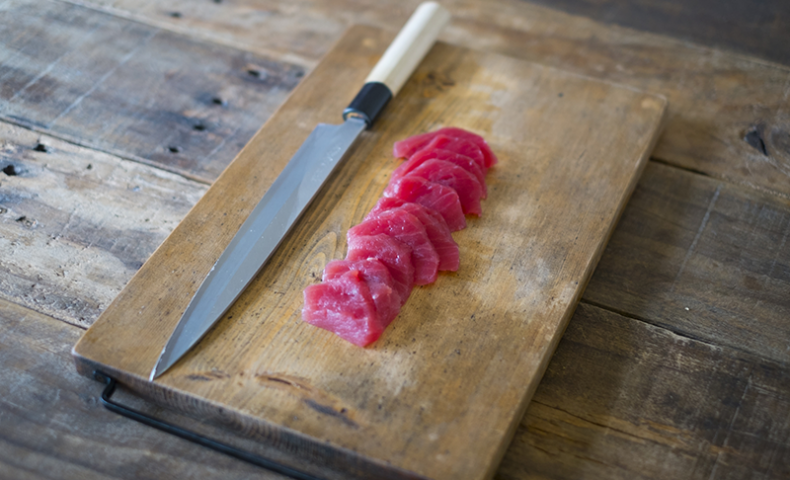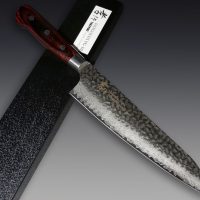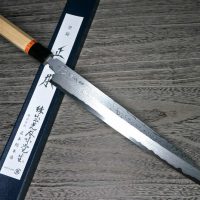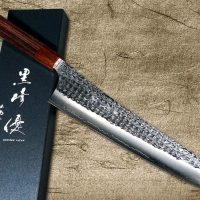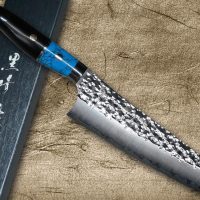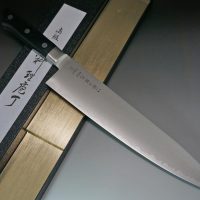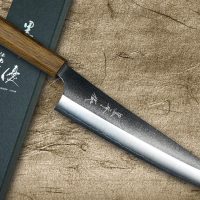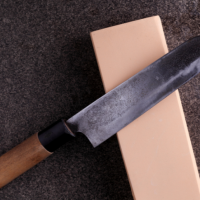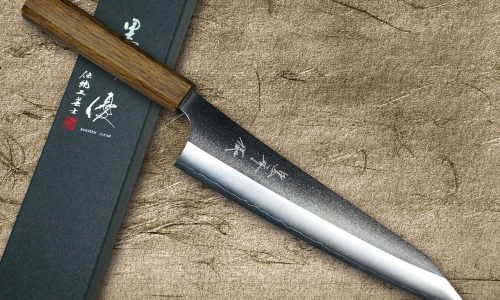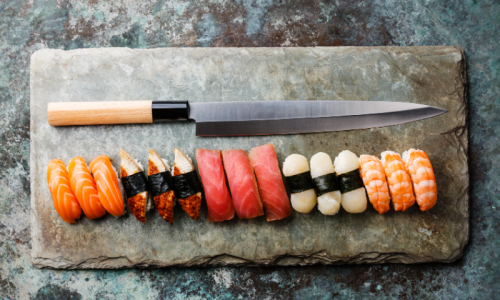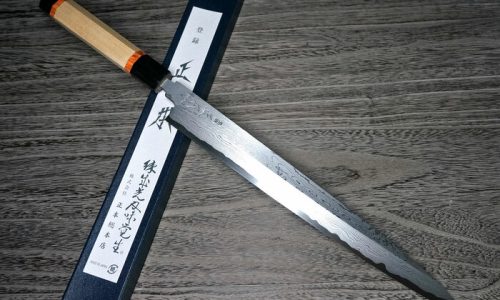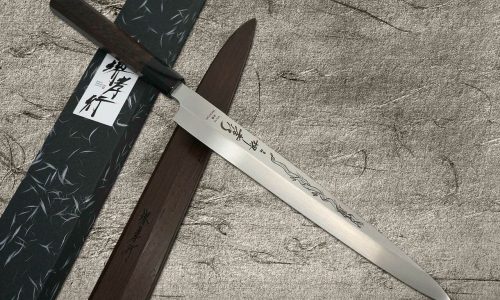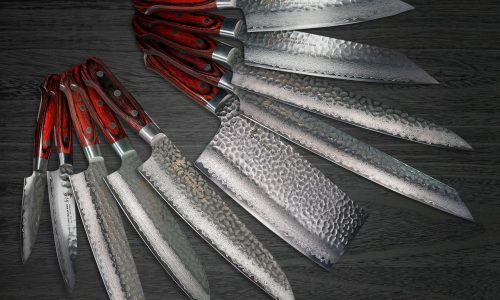Japanese Kitchen Knives are well known around the world for its excellent quality and suitable design for food preparation. They are made from stainless steel and Hagane (a type of steel used to make Japanese swords) using a traditional, labor-intensive Japanese Bladesmithing process developed in Japan.
The high-quality Japanese cutlery was founded in the 14th century in Sakai
the capital of Samurai sword manufacturing. After the samurai were banned from carrying swords in 1868, the blade smiths refocused their skills to cutlery production.
In the 16th century, steel knives were first made by Sakai craftsmen for cutting tobacco. Since then, the Sakai knife industry has been promoted by the Tokugawa shogunate, which awarded Sakai with a special seal of approval for its excellent craftsmanship.
Traditional Japanese knives are made from high carbon steel
which is tough, sharp and easy to sharpen but they are prone to rust and discoloration. To improve these issues, some modern Japanese knife manufacturers have included stainless steel in the materials.
Japanese knives are often designed with a single bevel blade which are sharpened at an angle on only one side. The blades are uniquely designed so that they will push the food away only on the side that is used to slice. This design makes traditional Japanese blades different from western style blades which are double bevel blades (sharpened at the angle on both sides).
As meat and western food grew in popularity in Japan after World War II
so did the western-style blade. Japan adopted French and German cutlery ideas during the Meiji period in the late 19th century, and traditional Japanese knives were not suitable for cutting meat.
Nowadays, there are many types of Japanese kitchen knives which have been developed for different culinary needs. Common characteristics of Japanese kitchen knives include its toughness, sharpness and edge-life.
The high-quality and versatility makes these knives popular in western-style cooking, and they have been used by many of the world’s top chefs.
Japanese knives are gaining popularity in the western market,
which has led to a rise in manufacturers around the world producing these knives. Authentic Japanese knives made in Japan can be identified by these following characteristics:
| Location verification | The name of the region and the city that the knife was made in will be displayed. |
|---|---|
| Knife steel | A true Japanese knife will list the cladding and core steel that the knife is made from. |
| The price | A Japanese knife will never sell for $20 or $30 or be marked as on a sale with a huge discount. |
VG-10 steel is made in Japan: VG-10 is stainless steel that is formulated in Japan.
Let’s check some types of Japanese kitchen knives below
| GYUTO (Chef’s knife) | These knives are made of harder steel with a double bevel and are designed for cutting chunks of meat. The dimensions of these knives range between 150 – 390 mm, and the thickness of the blades is between 1.5 – 5 mm. GYUTO (Chef’s knife) details |
|---|---|
| SANTOKU (Multi-purpose) | These knives come with a double bevel and are used for cutting vegetables, fish, and meat. The dimensions of these knives range between 165 – 180 mm. |
| BUNKA (Multi-purpose) | These knives come with a double bevel with the signature “reverse-tanto” angled tip. They are designed for cutting, chopping, slicing, dicing, and mincing foods such as meat, fish, vegetables, and herbs. The dimensions of these knives range between 120 – 240 mm. |
| NAKIRI & USUBA (Vegetable knife) | These knives come with a double bevel, are rectangular, thin, and designed for cutting vegetables. The dimensions of these knives range between 165 – 180 mm. |
| PETTY (Paring/Utility knife) | This is a smaller version of the GYOTO (Chef’s knife) and is used for peeling and carving fruits and vegetables. The dimensions of these knives range between 120 – 150 mm. |
| YANAGIBA | These knives are long and thin, and is used for cutting thin slices of raw fish. The dimensions of these knives range between 240 – 360 mm. |
| DEBA | This is a heavy and a classic Japanese knife that comes in several variations (Hon-deba, Ko-deba, Kanisaki-deba, Yo-deba and Miroshi-deba). They’re designed for cutting and filleting fish and chicken. The dimensions of these knives range between 165 – 210 mm, and the thickness is up to 9 mm. |
| CHUKABOCHO (Chinese cleaver) | This knife has a thin and sharp blade, and is designed for cutting vegetables and any many other cooking tasks. The dimensions of these knives range between 180 – 120 mm. |
Japanese Kitchen Knife Epilogue
Today, Japanese Kitchen Knives are commonly used in every kitchen around the world. The prices of these knives can vary depending on the brand and quality. The more expensive the blade, the longer it will last. Due to its versatility, Japanese kitchen knives are extremely useful and should be a staple in every chef’s kitchen.

